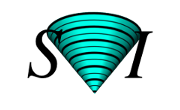™Huygens STED Deconvolution Software
Achieves an unmatched two-fold increase in signal and an eight-fold leap in resolution
Reach 22nm Resolution
Most advanced Algorithms
All Microscope Brands
Testimonials
Use in research
Anan Chen et al., A coronaviral pore-replicase complex links RNA synthesis and export from double-membrane vesicles. STED images were deconvolved with Huygens. Sci. Adv.10 (2024)
Rodrigues-Oliveira T, Wollweber F et al., Actin cytoskeleton and complex cell architecture in an Asgard archaeon. STED and Airyscan images were deconvolved with Huygens. Nature 613: 332–339 (2023)
Spahn C, Grimm JB, Lavis LD et al., Whole-Cell, 3D, and Multicolor STED Imaging with Exchangeable Fluorophores. STED images were deconvolved with Huygens. Nano Letters 19, 500-505 (2019)
For more, see Scientific PublicationsRelated products
STED 3D stacks often suffer from misalignment of slices due to thermal fluctuations. Therefore, the Object Stabilizer is included in STED deconvolution. The thermal drift correction is also integrated into the specialized STED option for the Huygens PSF Distiller. A distilled PSF from bead images improves the deconvolution results even further and can be used to obtain the STED saturation factor.
Object Stabilizer PSF Distiller
More information
Introduction to deconvolution Huygens Deconvolution software Deconvolution images
